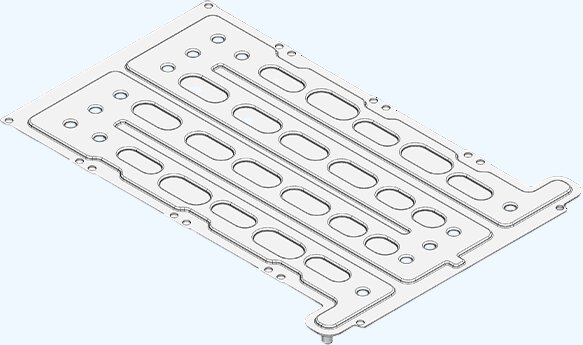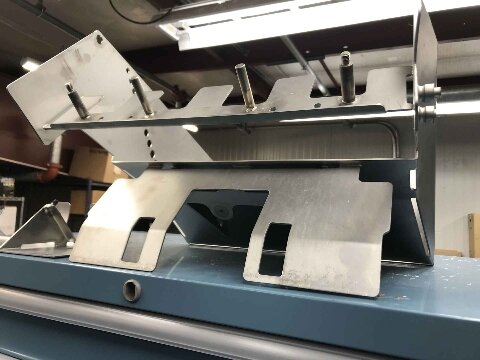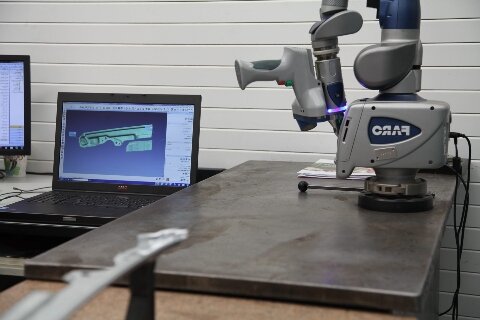CNC drilling is an advanced manufacturing process that helps create precise holes in materials like metals, plastics, and composites. Manual drilling leads to errors, wasted materials, and project delays. CNC drilling offers a solution that cuts production time and raises accuracy to near-perfect levels.
By using CNC technology, manufacturers can achieve precision that is difficult with manual drilling methods. Would you like to learn more about the benefits and applications of CNC drilling? Keep reading for a deeper look!
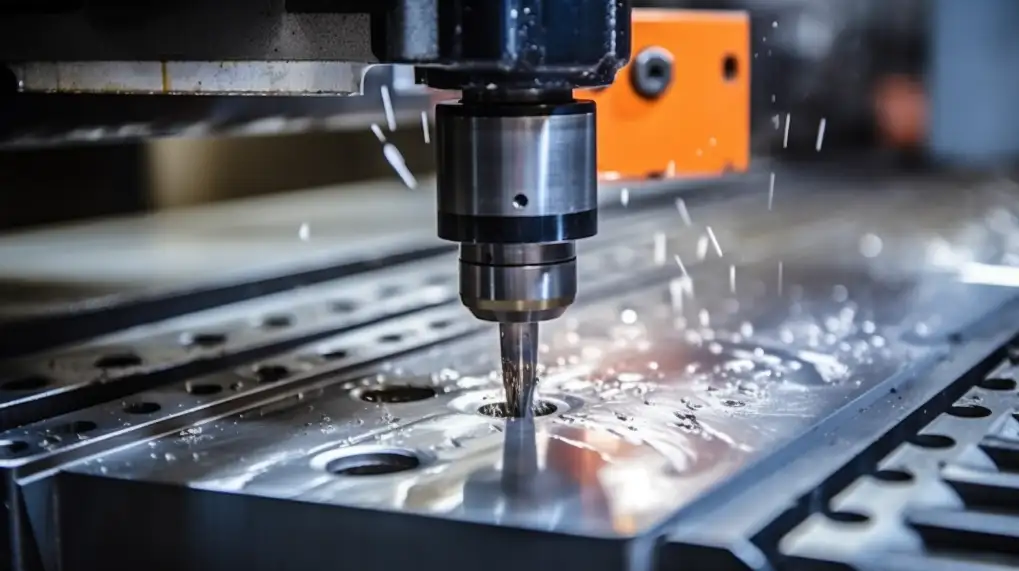
What is CNC Drilling?
CNC drilling is a process in which a CNC machine drills holes in materials. The machine follows exact instructions from a computer program, ensuring holes are drilled with precise size, depth, and location. This process is key to component manufacturing and product production and is used in various industries.
The CNC Drilling Process: How It Works
CNC drilling involves several essential steps to ensure precise and accurate holes. Here’s a breakdown of the process.
Step 1: Creating the Workpiece Geometry
The first step is to define the part’s geometry. Engineers design the workpiece and specify the hole locations, sizes, and depths.
This design is typically created using CAD software. The geometry is then converted into a format the CNC machine can understand.
Step 2: Choosing the Appropriate Drilling Cycle
Once the workpiece design is ready, the next step is choosing the proper drilling cycle. Different types of holes may require different cycles.
For example, peck drilling is used for deeper holes, while a simple drilling cycle may be enough for shallow holes.
Step 3: Determining the Appropriate Tool Parameters
In this step, the right drill bit and tool parameters are selected. Factors like tool material, diameter, and cutting speed are considered based on the material being drilled and the type of hole required.
Step 4: Setting up the CNC Drilling Machine
Next, the CNC drilling machine is set up. The workpiece is securely fixed to the machine bed. The correct drill bit is installed, and the machine is calibrated to the workpiece’s dimensions.
Step 5: Programming the CNC Drilling Machine
After setup, the machine needs to be programmed. A CNC program is written to guide the machine through each step of the drilling process. The program specifies the hole positions, drill speeds, feed rates, and depths. Once the program is complete, it is loaded into the CNC machine.
Step 6: Actual Drilling Process
Finally, the drilling process begins. The CNC machine follows the programmed instructions, drilling precise holes in the material. The machine operates autonomously, making adjustments as needed to ensure accuracy.
After the drilling, the workpiece is inspected to confirm that the holes meet the required specifications.
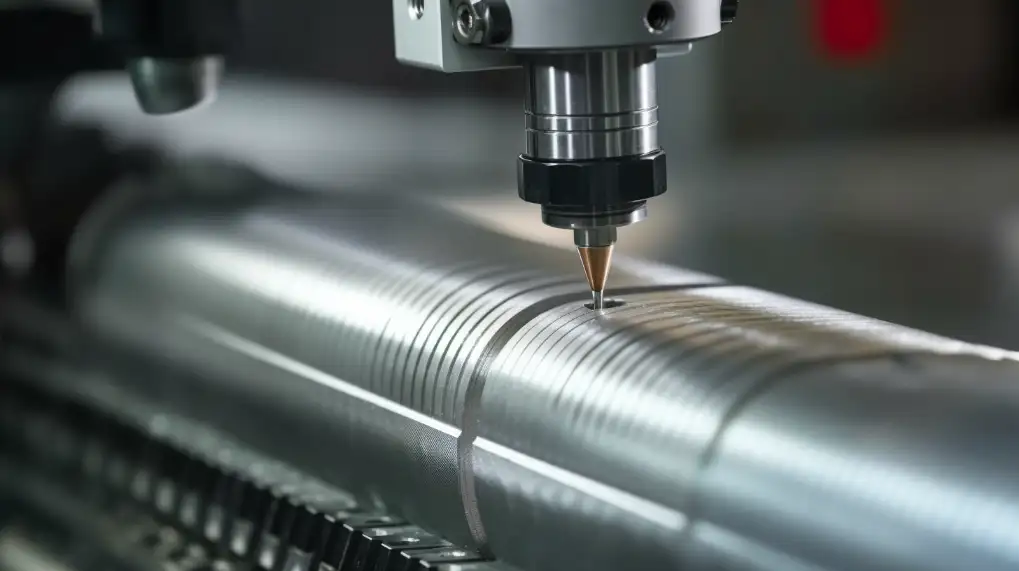
The Components of CNC Drilling Machines
CNC drilling machines have several key components that achieve precise drilling. Each part is crucial in ensuring the machine operates effectively and efficiently.
CNC Controller
The CNC controller is the brain of the machine. It interprets the program and converts it into commands that control the machine’s movement and operation. The controller sends signals to various machine parts, ensuring everything moves in sync and following the programmed instructions.
Spindle
The spindle holds and rotates the drill bit, providing the necessary speed and torque for drilling. The spindle’s speed can be adjusted based on the material and the type of drilled hole.
Drill Head
The drill head contains the drill bit and the mechanism that moves it into the material. It is attached to the spindle and can be adjusted for different drilling depths.
Tool Holder
The tool holder securely holds the drill bit in place. It ensures that the tool does not move during the drilling process, which could affect the hole’s accuracy.
Machine Bed
The machine bed is the platform on which the workpiece is placed. It is usually adjustable, allowing workpieces of different sizes and shapes to be securely fixed.
Linear Guides and Rails
Linear guides and rails allow the moving parts of the CNC machine, such as the drill head and workpiece holder, to travel smoothly along the machine’s axes.
Servo Motors
Servo motors drive the machine’s movements, controlling the drill head’s positioning and the workpiece’s movement. The CNC machine can achieve precise drilling results by accurately controlling the motors.
Coolant System
The coolant system cools the drill bit and the material being drilled. It also helps to remove chips and debris from the drilling area, keeping the workpiece clean.
Feedback Sensors
Feedback sensors monitor the machine’s performance during the drilling process. They provide real-time data on the position and movement of the machine’s parts.
Considerations and Tips for Drilling a Hole
Drilling a precise hole requires careful planning and the proper techniques. Here are a few key considerations and tips to help you achieve the best results.
Choose the Right Drill Bit
Selecting the right drill bit is crucial for achieving clean and accurate holes. The type of material you are drilling, the hole size, and the depth will all influence your choice.
High-speed steel (HSS) bits are usually sufficient for soft materials like wood or plastic. Drill bits are more durable and practical for complex materials like stainless steel, carbide, or cobalt.
Optimize the Spindle Speed and Feed Rate
Spindle speed and feed rate should be carefully adjusted to match the material you are drilling and the hole size. A higher spindle speed is better for softer materials, while slower speeds are ideal for more rigid materials.
The feed rate, which controls how fast the drill moves into the material, should also be adjusted to avoid overheating or damaging the drill bit. Start with moderate speeds and adapt based on the material’s response.
Use Appropriate Coolants or Lubricants
Coolants or lubricants help reduce heat during drilling and prevent the drill bit from wearing out too quickly. They also help clear away chips and debris, keeping the drilling area clean.
Water-based coolants or oil-based lubricants are commonly used for metals. For softer materials, air or a light lubricant mist may be sufficient.
Securely Clamp the Workpiece
Use clamps or a vise to secure the material firmly to the machine bed. This ensures that the workpiece doesn’t shift during drilling, which could lead to misaligned holes.
Be sure the clamps are positioned in a way that does not interfere with the drilling path, allowing the drill bit to work freely.
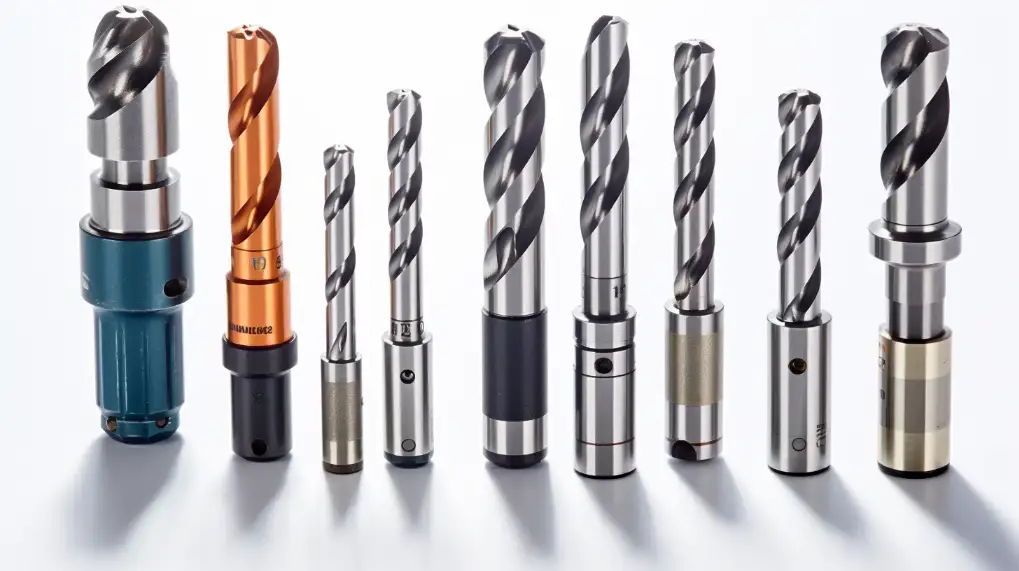
Types of CNC Drilling Machines
The CNC Drilling process utilizes several types of drilling machines, each with different capabilities. Here is a brief overview of some of the main types of CNC drilling machines:
Vertical CNC Drilling Machines
These machines feature a vertical spindle orientation, with the workpiece in a horizontal plane. They’re commonly used for drilling holes in smaller or medium-sized workpieces. Their design allows for high precision and easy access to the drilling area.
Horizontal CNC Drilling Machines
In contrast to vertical machines, horizontal CNC drilling machines have a spindle that rotates horizontally. This orientation provides better control when working with larger and heavier materials, offering improved chip removal and stability.
Multi-Spindle CNC Drilling Machines
As the name suggests, these machines are equipped with multiple spindles, allowing simultaneous drilling operations in different locations on the workpiece. Multi-spindle machines are ideal for high-volume production, providing efficiency and reduced cycle times.
Specialized CNC Drilling Machines
These are custom-built machines designed for specific tasks or unique materials. Examples include machines designed for deep-hole drilling or machines with custom tooling setups. They’re typically used when standard machines can’t meet a specific project’s precision or capacity requirements.
Materials Used in CNC Drilling
Here’s a breakdown of the materials commonly used in CNC drilling:
Metals: Steel, Aluminum, Brass, and More
- Steel: A widely used material due to its strength and durability. Various grades, including carbon steel, stainless steel, and tool steel, are used depending on the application.
- Aluminum: Known for its lightweight and corrosion resistance, aluminum is commonly used in aerospace, automotive, and electronic components.
- Brass: A softer metal with excellent workability. Brass is widely used for electrical components, plumbing fittings, and decorative applications.
Non-Metallic Materials: Plastics and Composites
- Plastics: Materials like acrylic, polycarbonate, and PEEK are drilled for medical, aerospace, and consumer electronics applications. They require specialized tools to prevent cracking and melting.
- Composites: These materials usually combine fibers with resin. CNC drilling of composites requires precision to avoid delamination and fiber damage.
Advantages of CNC Drilling
CNC drilling offers many advantages over conventional drilling techniques. Here’s a breakdown of the benefits of CNC drilling:
High Precision and Accuracy
CNC drilling machines are known for their high precision. They can drill holes with tight tolerances, ensuring every part is made precisely to the correct size.
Consistency and Repetition in Production
Once a CNC program is set up, the machine can repeat the same process repeatedly without changes. This means that each part is identical to the last one, ensuring consistency.
Reduced Human Error
Since most of the work is automated, the risk of errors goes down. This improves the quality of the parts and makes the process safer, too.
Flexibility in Design and Customization
The machine can easily be reprogrammed to drill different sizes, patterns, or depths. This makes handling custom orders and design changes easy, which is perfect for prototypes or smaller runs.
Faster Production Times
CNC drilling machines can run continuously with minimal downtime. This speeds up production times and helps meet deadlines more efficiently.
Applications of CNC Drilling in Various Industries
CNC drilling helps create parts in many key industries. The process makes exact holes for parts that need to work perfectly every time.
Automotive Manufacturing
Car makers use CNC drilling to make engine blocks and brake parts. The machines create oil passages, mounting holes, and connection points for modern vehicles.
Aerospace and Aviation
Aircraft parts need holes drilled with perfect accuracy. CNC drilling makes fuel system parts, wing components, and mounting points that meet strict safety rules.
Electronics and Circuit Board Production
Circuit boards need many small holes for components. CNC drilling makes these holes fast and exact, letting manufacturers create complex electronics in less time.
Medical Device Manufacturing
Medical tools and implants need precise holes for proper function. CNC drilling creates parts for surgical tools, bone screws, and medical pumps with high accuracy.
Industrial Equipment Fabrication
Factory machines need substantial, exact parts to work right. CNC drilling makes holes for heavy-duty equipment mounting points, fluid passages, and connection spots.
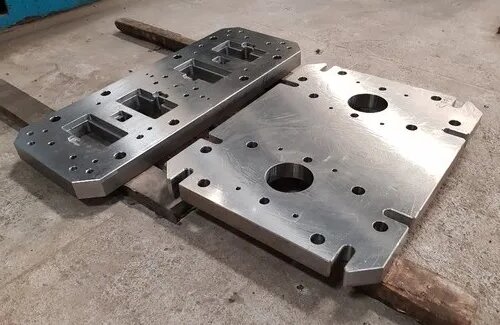
What are the Main Differences Between CNC Milling and CNC Drilling?
The main job of CNC drilling is to make holes, while CNC milling cuts material in many ways. Here’s a breakdown of what makes each process unique:
Function and Purpose
CNC drilling is used to make holes in a material. It uses a rotating drill bit that moves down into the workpiece. It’s focused only on drilling.
CNC milling, however, is more versatile. It removes material from the workpiece using rotating cutters. Milling can perform many tasks, such as cutting, shaping, finishing, and drilling.
Types of Movements and Operations
CNC drilling is usually straightforward. The drill bit moves vertically down into the material.
CNC milling is more complex and can move in multiple directions. Milling machines often use 3, 4, or 5 axes, which allows them to create more complicated shapes and details, like pockets and slots.
Tooling and Equipment
CNC drilling uses mainly drill bits. These bits come in different sizes to create holes of various diameters.
CNC milling uses various tools, such as end mills, face mills, and slot drills, which allow for more complex cutting tasks.
Speed and Efficiency
CNC drilling is usually faster than CNC milling. Drilling is more straightforward and requires fewer changes in the machine’s movements.
Milling is slower because it involves more detailed movements and often requires tool changes.
What are the Main Differences Between CNC Lathes and CNC Drilling?
These two machines serve different roles in metalworking. Here’s how they differ:
Function and Purpose
CNC lathes are designed to shape a material by rotating it while a cutting tool is applied to the workpiece. The tool removes material to create cylindrical shapes, such as shafts or tubes.
CNC drilling, on the other hand, creates holes in a material by moving a rotating drill bit into the workpiece. Drilling focuses primarily on making precise holes, not shaping the material.
Movement and Operation
CNC lathes use a rotational movement. The workpiece spins while the cutting tool moves along its length to shape it. The rotation of the material helps to create smooth, cylindrical shapes.
In CNC drilling, the drill bit moves in a straight line, usually vertically, into the material. This simple up-and-down motion allows for precise hole creation.
Tooling and Equipment
CNC lathes use turning tools to cut and shape the rotating material. These tools can make various shapes and finish the workpiece.
The main tool in CNC drilling is the drill bit, which is specifically designed to create holes.
Speed and Efficiency
CNC lathes can be used faster than drilling to make cylindrical parts. The workpiece rotates, and the cutting tool shapes it quickly.
CNC drilling is efficient for hole-making but may take longer for large numbers of holes.
Conclusion
CNC drilling is a precise manufacturing process for creating holes in materials. The machine uses a rotating drill bit to make various sizes and depths of holes. It’s widely used in industries like automotive, aerospace, and electronics for its accuracy and efficiency.
Contact us today if you need high-quality CNC drilling services for your next project. We’re here to help with your manufacturing needs!
Hey, I'm Kevin Lee

For the past 10 years, I’ve been immersed in various forms of sheet metal fabrication, sharing cool insights here from my experiences across diverse workshops.
Get in touch

Kevin Lee
I have over ten years of professional experience in sheet metal fabrication, specializing in laser cutting, bending, welding, and surface treatment techniques. As the Technical Director at Shengen, I am committed to solving complex manufacturing challenges and driving innovation and quality in each project.

